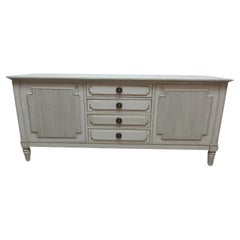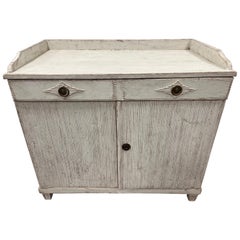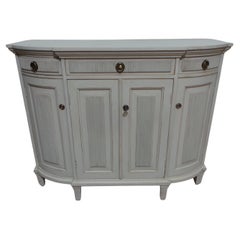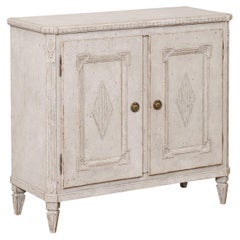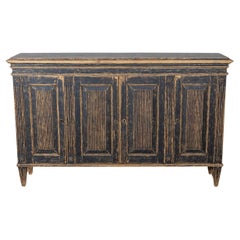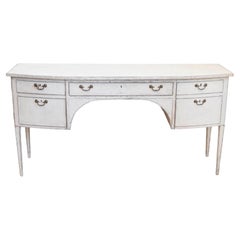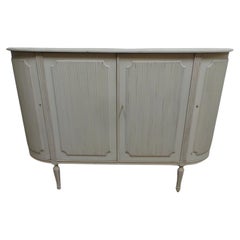Gustavian Style Sideboard
Vintage 1940s Swedish Gustavian Sideboards
Wood
Antique Mid-19th Century Swedish Gustavian Sideboards
Brass
Vintage 1950s Swedish Gustavian Sideboards
Wood
Vintage 1950s Swedish Gustavian Sideboards
Wood
Antique Late 19th Century Swedish Gustavian Sideboards
Wood
Antique 19th Century Swedish Sideboards
Pine
Early 20th Century Swedish Gustavian Sideboards
Brass
Vintage 1940s Swedish Gustavian Sideboards
Maple
Vintage 1940s Swedish Gustavian Sideboards
Wood
Vintage 1940s Swedish Gustavian Sideboards
Wood
Vintage 1930s Swedish Gustavian Sideboards
Wood
Antique Early 19th Century Swedish Gustavian Sideboards
Pine
Antique Early 19th Century Swedish Gustavian Sideboards
Pine, Paint
Antique 19th Century Swedish Gustavian Sideboards
Wood
Antique Early 19th Century Swedish Gustavian Sideboards
Pine
Antique Mid-19th Century Swedish Gustavian Sideboards
Pine
Antique Mid-19th Century Swedish Gustavian Sideboards
Pine
Antique Early 1900s Swedish Gustavian Sideboards
Wood
21st Century and Contemporary English Gustavian Sideboards
Pine
21st Century and Contemporary English Gustavian Sideboards
Pine
Antique Late 19th Century Swedish Gustavian Sideboards
Wood
Antique Mid-19th Century Swedish Gustavian Sideboards
Brass
Early 20th Century Swedish Gustavian Sideboards
Mid-20th Century Sideboards
Wood
Antique Mid-19th Century Swedish Gustavian Sideboards
Brass
Antique 1820s Swedish Gustavian Sideboards
Vintage 1930s Swedish Gustavian Sideboards
Wood
Vintage 1950s Swedish Gustavian Sideboards
Berlin Iron
Vintage 1940s Swedish Gustavian Sideboards
Wood
Vintage 1940s Swedish Gustavian Sideboards
Wood
Vintage 1940s Swedish Gustavian Sideboards
Wood
Vintage 1940s Swedish Gustavian Sideboards
Wood, Birch
Vintage 1930s Swedish Gustavian Sideboards
Wood
Vintage 1920s Swedish Gustavian Cabinets
Wood
Vintage 1940s Swedish Gustavian Sideboards
Wood
Antique Mid-19th Century Swedish Gustavian Sideboards
Pine, Paint
Antique Late 19th Century Swedish Gustavian Sideboards
Wood
Antique Early 19th Century Swedish Gustavian Sideboards
Pine
Antique Early 19th Century Swedish Gustavian Sideboards
Pine
20th Century Swedish Gustavian Sideboards
Wood, Paint
Antique 19th Century Swedish Gustavian Sideboards
Wood
Vintage 1930s Swedish Gustavian Sideboards
Wood
Vintage 1910s Swedish Gustavian Benches
Wood
20th Century Swedish Gustavian Sideboards
Wood
Early 2000s Swedish Gustavian Sideboards
Wood, Paint
Antique 19th Century Swedish Gustavian Sideboards
Antique 19th Century Swedish Gustavian Sideboards
Wood
Antique Late 19th Century Swedish Gustavian Buffets
20th Century Scandinavian Gustavian Buffets
Wood
Antique Late 19th Century Swedish Gustavian Sideboards
Wood
Antique Late 19th Century Swedish Gustavian Sideboards
Wood
Antique Late 19th Century Swedish Gustavian Sideboards
Wood
Antique 19th Century Swedish Gustavian Sideboards
Wood
Antique Late 19th Century Swedish Gustavian Sideboards
Wood
Antique Mid-19th Century Swedish Sideboards
Wood, Paint
Antique Mid-19th Century Swedish Gustavian Sideboards
Wood
Early 20th Century Swedish Gustavian Sideboards
Wood
Antique Late 19th Century Swedish Gustavian Sideboards
Brass
- 1
Gustavian Style Sideboard For Sale on 1stDibs
How Much is a Gustavian Style Sideboard?
A Close Look at Gustavian Furniture
With clean lines and muted colors, antique Gustavian furniture is understated and elegant. It represents a more restrained version of the transition from Rococo to neoclassicism that was happening in France under Louis XVI. The style developed under Swedish King Gustav III, who reigned from 1771 until his assassination in 1792, and his son Gustav IV, who ruled until 1809. Although Gustavian furniture is mostly used to refer to pale painted cabinets, commodes, armchairs and other items, it involved a range of influences.
Gustavian-style furniture was inspired by discoveries at Pompeii and Herculaneum as well as the grandeur of European palaces like Versailles, with local softwoods such as pine and birch. There was also an emphasis on natural light; crystal chandeliers and large mirrors played a role in radiating the fleeting daylight of winter, giving it a distinctive aesthetic.
Where earlier furniture was curvy and florid, this new era was more architectural, with tapered and fluted legs and rectangular and oval shapes. Luminous gilt contrasted with the palette of soft blues on upholstery and painted surfaces. Leading furniture builders included Gottlieb Iwersson, Louis Masreliez and Erik Öhrmark. The latter, a French-born Swedish decorator, designed the Sulla chair, a seat that was demonstrative of technical skill and precise craftsmanship and drew on Greek klismos chairs. Masreliez’s Sulla chair was made by Öhrmark and featured decorative ornamentation produced by Jean-Baptiste Masreliez, Louis’s younger brother.
While the wealthy had furniture carved with neoclassical details like scallops and rosettes, more affordable options were adorned with faux finishes that mimicked marble and stenciled patterns. The simple elegance of Gustavian furniture would have a long impact on Swedish design, informing the 20th-century appreciation for function and form. In the 1950s, IKEA mass-produced copies of a Gustavian commode designed by cabinetmaker Georg Haupt, who created pieces for the Royal Palace, making the furniture a fixture of everyday Swedish life.
Find a collection of antique Gustavian seating, tables, decorative objects and other furniture on 1stDibs.
Finding the Right Sideboards for You
An antique or vintage sideboard today is a sophisticated and stylish component in sumptuous dining rooms of every shape, size and decor scheme, as well as a statement of its own, showcased in art galleries and museums.
Once simply boards made of wood that were used to support ceremonial dining, sideboards have taken on much greater importance as case pieces since their modest first appearance. In Italy, the sideboard was basically a credenza, a solid furnishing with cabinet doors. It was initially intended as an integral piece of any dining room where the wealthy gathered for meals in the southern European country.
Later, in England and France, sideboards retained their utilitarian purpose — a place to keep hot water for rinsing silverware and from which to serve cold drinking water — but would evolve into double-bodied structures that allowed for the display of serveware and utensils on open shelves. We would likely call these buffets, as they’re taller than a sideboard. (Trust us — there is an order to all of this!)
The sideboard is often deemed a buffet in the United States, from the French buffet à deux corps, which referred to a storage and display case. However, a buffet technically possesses a tiered or shelved superstructure for displaying attractive kitchenware and certainly makes more sense in the context of buffet dining — abundant meals served for crowds of people.
Every imaginable iteration of the sideboard has taken shape over the years. Furniture maker and artist Paul Evans, whose work has been the subject of various celebrated museum exhibitions, created ornamented, welded and patinated sideboards for Directional Furniture, collections such as the Cityscape series that speak to his place in revolutionary brutalist furniture design as much as they echo the origins of these sturdy, functional structures centuries ago.
If mid-century modern sideboards or vintage Danish sideboards are more to your liking than an 18th-century mahogany sideboard with decorative inlays in the Hepplewhite style, the particularly elegant pieces crafted by designers Hans Wegner, Edward Wormley or Florence Knoll are often sought by today’s collectors.
Whether you have a specific era or style in mind or you’re open to browsing a vast collection to find the right fit, 1stDibs has a variety of antique and vintage sideboards to choose from.
